July 2015
Unknown photographer
Shearing, Quandong
1887
Albumen print on cabinet card
10 x 8cm
A fascinating set of albumen prints mounted on cabinet cards of Quandong, New South Wales, Australia in 1887. These images are probably among the first ever taken of the area, most likely by a travelling photographer. The reverse of the cards bearing the monogram C.A. or A.C. Each image measures 10 x 8cm (c. 4 x 3 inches), on slightly larger card (12 x 9.2cm / 4.8 x 3.6 inches).
It is instructive to look at the structure of the images to see how this unnamed photographer visualised his subject matter. Firstly, the three photographs of the house. Taken from the top of a barn (imagine lugging a large camera up there!), one image offers a three-quarter profile of the homestead, in the background wildness, with two white picket gates providing entry through a guardian hedge that protects the habitation. Next the photographer swings the camera around 180 degrees, photographing the homestead not from front on but again on an angle for dramatic effect, framing the foreground with a fence made of chopped down trees which encloses a sparse, newly planted garden. In one dark exposure, two men stand in formal pose stand with the grandmother sitting wrapped in a shawl beside one of the men. In the other lighter exposure (the photographer obviously had trouble here), we again have a formal placement of people, this time with the grandmother (without shawl) and grandfather sitting opposite each other, probably with their grandsons with dogs in front of them. Anyone who has lived in rural Australia would understand the significance of the verandah as a gathering place and congregational space to sit, and for youngsters, to play with their dogs.
Secondly, we observe the two side-on photographs of the horse and carts. Both show a distinctly formal placement of the objects within the picture plane with a limited spatial depth to the photographs, with no vanishing point. But there are distinctive differences between the two photographs. The horse and trap evidence the status of the people involved, the two horses and large carriage being held steady by a third person and far left of picture. The second photograph is much more informal… the horse and young foal, the man in relaxed pose, hand on knee and then, in the foreground – as though to emphasise the working nature of this cart – a pile of logs and trees fill our vision, a stark contrast to the dark trees in the background. There is nothing in the foreground of the first photograph, forcing the eye to rest on the formal structure of man/horse/men/trap.
Next we observe two photographs of a flock of sheep and men. In the first image the photographer has framed the man and dog at left with horse behind the flock of sheep, while at right a group of three men stand close together before a wooden fence… holding up the right hand side of the image. Wilderness can be seen beyond. Notice how there is a flat empty area at the front of the image which leads the eye to the right and up to the men, thence to the tall trees beyond. Lovely spaces in this image, with the grouping of the sheep and men, the horizontal line of the fence dividing the tonality of the image – dark at the bottom, light at the top. In the second image the photographer has not moved the camera but he has moved the men at right. The framing of the man at left and the horse and flock of sheep are still the same, but now he has removed one man and moved the other two men to be slightly behind the spatial plane of the man with the dog. The sun has come out as we can see the shadow of the two men on the ground, and the exposure must have been short, for we can see the paw of the dog caught in mid-air. It is interesting to note that the photographer does not mind the two trees coming out of the tops of the men’s heads at right, instead of placing them in the negative space between the trees. Further evidence of the nature of the environment in which this homestead was evolving can be found in the photograph At Quandong, an almost modernist rendition of the wilderness, in which the image is divided into a series of horizontal lines – foreground fence, mid-ground fence, horizon line with the wild beyond. The photographer thought this view important enough to warrant a photograph, even though there is nothing obviously substantial contained in the image. It does, however, graphically illustrate the isolation of the homestead within the environment.
Lastly we have the images of Shearing in Woolshed and Shearing, Quandong. The light is absolutely beautiful in both of these images, entering as it does through the door at bottom left of the images and, as an opposite, through the open doors at the top left of the image. Shearing, Quandong is the more successful of the two images through its pure simplicity. Note the strong diagonal from top left to bottom right, which in Shearing in Woolshed is disturbed by the presence of the two overseers. Also note how in the image that was likely taken first, Shearing in Woolshed, the camera is placed higher up. We can tell this by the visibility of the poles behind the overseer and the fact that we can’t see the base of the wooden pole at right. In this image the lad at right has his hat on. In Shearing, Quandong the distance between the door, poles and the top of the image at back is much shorter and we can now see the base of the wooden pole at right. The lad has taken off his hat and put in on the floor there.
How young both of these lads are, with their crew cut hair, using huge manual shears. What backbreaking work it must have been in the heat and humidity… and the one thing that you cannot get an idea of, is the smell of these woolsheds. If you have ever been in one of these woolsheds you know what a pungent aroma these places have.
These photographs were taken a year before the iconic Australian painting by Tom Roberts Shearing the Rams (1888-1890), an archetypal vision of Australian pastoral life, and through them we can see how much they confirm Roberts’ vision of Australian rural life. Leigh Astbury observes that,
“Roberts was not, however, the first artist to depict the subject of shearing sheep. It had been previously treated in a few isolated paintings but, more frequently, shearers were shown at work in photographs and in illustrated newspapers and magazines during the 1870s and 80s. An exploration of the contemporary pictorial tradition reveals that in the formulation of his painting Roberts followed an established photographic and illustrative convention, as opposed to originating a new subject for artistic attention.”
“Roberts began preparatory studies for the picture at the Brocklesby station during the spring of 1888 when he made between seventy and eighty sketches of ‘the light, the atmosphere, the sheep, the men and the work’. … During the following spring of 1889 Roberts set out his canvas in the Brocklesby shed and began to paint the final work. He ‘picked out the most characteristic and picturesque of the shearers, the “rouseabouts” and the boy’, and carefully posed them in the manner he required… Shearing the rams was a carefully and consciously formulated painting executed over a long period, not an informal, ‘slice of life’ glimpsed in an Australian shearing shed. “
“Roberts, who worked as a photographer’s assistant, may have been aware of shearing scenes which appeared in contemporary photographs. A photograph entitled Shearing [see below], by a well-known Melbourne photographer, Charles Nettleton, anticipates the construction of pictorial space found in Shearing the rams. There is the same slightly diagonal thrust into distance, accentuated by the lines of the floorboards. The structure of the shearing shed roof plays a similar role in the composition, while one gains the same sense of rhythmic interval as the central poles recede into the background. Equally significant is the way the photograph conveys the quality and sources of light in the shed: the light filters through from outside and permeates the atmosphere.”1
.
This carefully planned composition, based on photographs and black and white illustrations, is a (social) construction and performance based on a reality that excludes outsiders and Other (namely Indigenous Australians in this case in point). Artist Dianne Jones rightly questions this deterministic, colonial envisioning of Australian heritage and national identity.
“Jones uses appropriation and reinterpretation to create conversations about issues that are important to her. By placing Aboriginal figures into historical artworks where previously there were none, Jones makes us aware of their absence from Australian art and from Australian history…
Shearing the Rams provides an example of Jones’ ongoing concern with the lack of accurate Indigenous representation within Australian culture, particularly within iconic nationalistic images. The original oil painting created by Tom Roberts in 1890 celebrated pastoral life and labour, and came to be considered an icon of Australian Impressionism and popular history. Even if the painting itself is not instantly recognisable to the viewer, the sentiment behind it is familiar, it is a sentiment repeated within iconic images of Australia’s post-colonial history. By replacing some of the figures, who are all white men in Roberts’ painting, with male members of her own family, Jones is reasserting their previously unrecognised presence in this part of Australian history. Her family were actively involved in the pastoral industry, but this involvement has not previously been acknowledged or celebrated in any way.”2
.
This blindness and bigotry towards others continues to this day in rural and regional Australia. I have experienced it myself in rural areas of New South Wales. A certain right-wing conservatism permeates the land, is almost embedded in its ongoing structures. We need artists like Jones to shine a light into the dark corners of the Australian psyche, for only then will we begin to understand the long path as a nation that we have to travel, the new narratives that we must construct.
Dr Marcus Bunyan
- Extract from Leigh Astbury. “Tom Roberts’s Shearing the rams: the hidden tradition,” in Sonia Dean (ed.,). Art Journal 19. National Gallery of Victoria, Nd. [Online] Cited 26/07/2015
- Extract from Sarah Norris. “Dianne Jones: Revisiting/Revising Australian Icons,” on the Art Right Now website June 2013 [Online] Cited 16/07/2015
Please click on the photographs for a larger version of the image.
Unknown photographer
Shearing, Quandong (detail)
1887
Albumen print on cabinet card
10 x 8cm
Unknown photographer
Shearing in Woolshed, Quandong
1887
Albumen print on cabinet card
10 x 8cm
Unknown photographer
Shearing in the Woolshed, Quandong (detail)
1887
Albumen print on cabinet card
10 x 8cm
Charles Nettleton (Australian, 1826-1902)
Seven Creeks Station near Longwood. Shearing
c. 1880
Albumen silver photograph
23.5 x 28.5cm on mount
Currie collection, State Library of Victoria
Tom Roberts (Australian, 1856-1931)
Shearing the Rams
1888-1890
Oil on canvas on composition board
122.4 x 183.3cm
Dianne Jones (Australian, b. 1966)
Shearing the rams
2001
Inkjet on canvas, edition of 10
121.9 x 182.6cm
© Dianne Jones
Please note: This image is used under conditions of “fair use” for the purpose of academic scholarship and art criticism.
Dianne Jones: Revisiting/Revising Australian Icons
Imagery plays an influential role in the formation of national identity. When this imagery is dominated by a particular cultural and ethnic perspective it results in the formation of a mythology that does not accurately reflect the culture it informs. Through her art practice Jones examines the relationship between popular imagery and national and personal identity. By questioning the validity of the imagery that has illustrated Australian history and has long been considered representative of Australian culture, Jones gives a voice, and a face, to those who were previously denied a place within the paradigm of Australian art.
Jones creates reproductions of classic Australian paintings in which the original image has been altered and reinterpreted. Images by artists such as Tom Roberts, Eugene von Guerard and Max Dupain have come to be representative of a romanticised Australian history. These well-known and well-loved images have had a significant role in defining Australian national identity, their nationalistic tone reflects a particular viewpoint of Australia’s post-colonial history. This viewpoint is limited and denies the experiences of many Australians, including the history of Jones’ family. In spite of these limitations, these images continue to hold significant cultural value for many Australians. The status of the original paintings Jones reinterprets, as highly valued and iconic works, make them ideal choices for affective reinterpretation.
Jones uses appropriation and reinterpretation to create conversations about issues that are important to her. By placing Aboriginal figures into historical artworks where previously there were none, Jones makes us aware of their absence from Australian art and from Australian history. She tries to make us aware of the lack of diversity in the images that are seen to illustrate Australian history and represent Australian culture. She highlights the absence of certain cultural groups by placing them back into the picture. In doing this she shows us how we can create a new and more accurate history that is inclusive rather than exclusive…
Shearing the Rams provides an example of Jones’ ongoing concern with the lack of accurate Indigenous representation within Australian culture, particularly within iconic nationalistic images. The original oil painting created by Tom Roberts in 1890 celebrated pastoral life and labour, and came to be considered an icon of Australian Impressionism and popular history. Even if the painting itself is not instantly recognisable to the viewer, the sentiment behind it is familiar, it is a sentiment repeated within iconic images of Australia’s post-colonial history. By replacing some of the figures, who are all white men in Roberts’ painting, with male members of her own family, Jones is reasserting their previously unrecognised presence in this part of Australian history. Her family were actively involved in the pastoral industry, but this involvement has not previously been acknowledged or celebrated in any way.
Extract from Sarah Norris. “Dianne Jones: Revisiting/Revising Australian Icons,” on the Art Right Now website June 2013 [Online] Cited 16/07/2015
Unknown photographer
Untitled [Horse and trap]
Quandong, 1887
Albumen print on cabinet card
10 x 8cm
Unknown photographer
At Quandong [Horse, foal and cart]
Quandong, 1887
Albumen print on cabinet card
10 x 8cm
Unknown photographer
Quandong from top of barn
Quandong, 1887
Albumen print on cabinet card
10 x 8cm
Unknown photographer
Quandong
1887
Albumen print on cabinet card
10 x 8cm
Unknown photographer
Quandong
1887
Albumen print on cabinet card
10 x 8cm
Unknown photographer
Quandong (detail)
1887
Albumen print on cabinet card
10 x 8cm
Unknown photographer
Quandong, N.S.W.
1887
Albumen print on cabinet card
10 x 8cm
Unknown photographer
Quandong
1887
Albumen print on cabinet card
10 x 8cm
Unknown photographer
Quandong (detail)
1887
Albumen print on cabinet card
10 x 8cm
Unknown photographer
At Quandong
1887
Albumen print on cabinet card
10 x 8cm
Unknown photographer
Stile at Acme hut, Quandong
1887
Albumen print on cabinet card
10 x 8cm


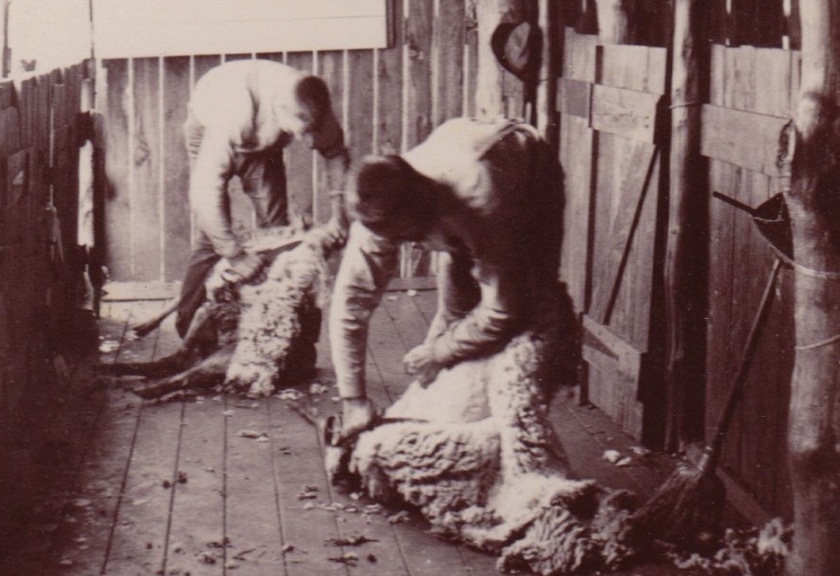
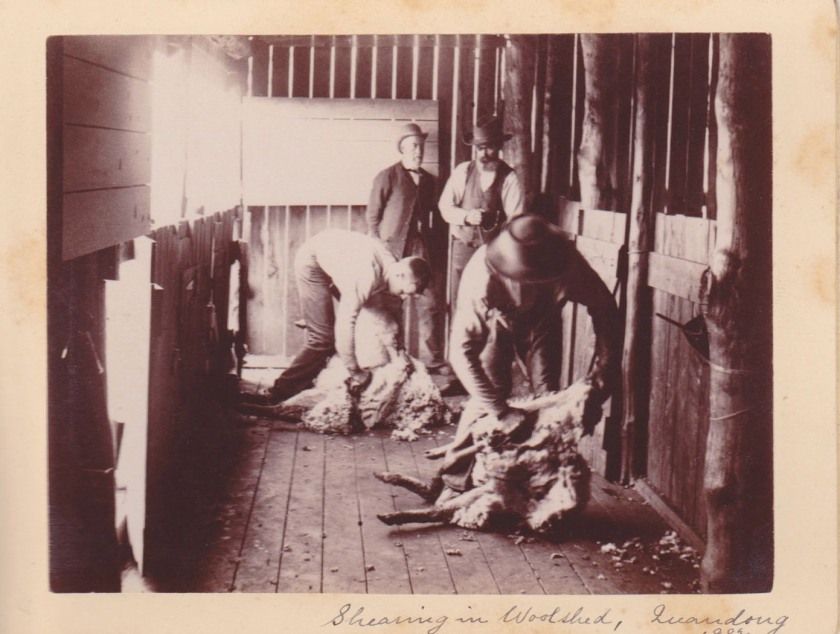
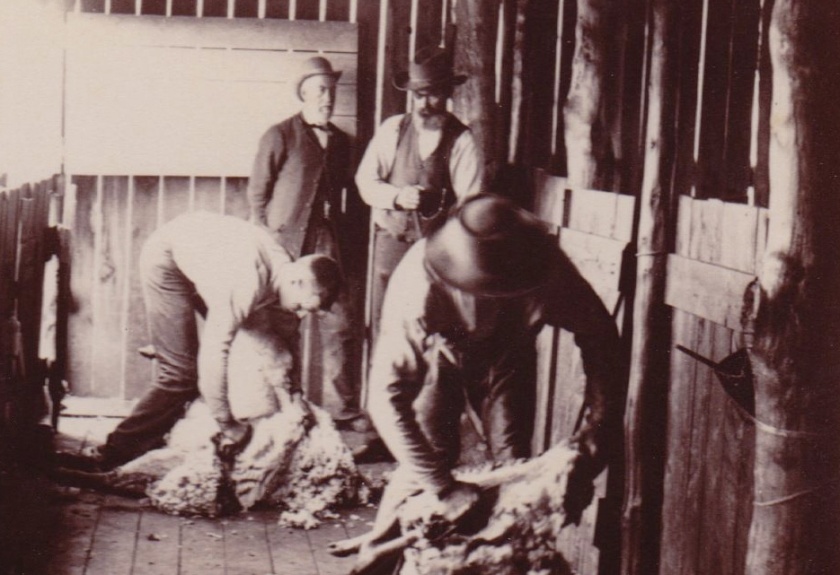

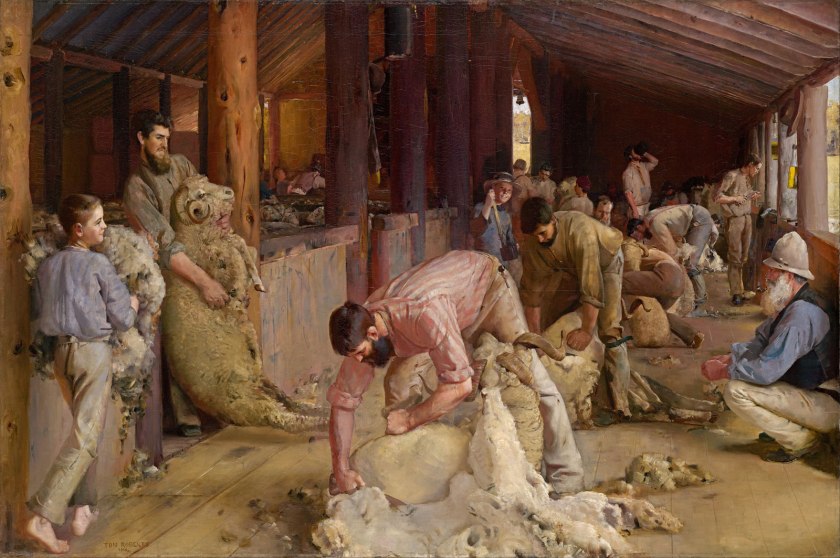

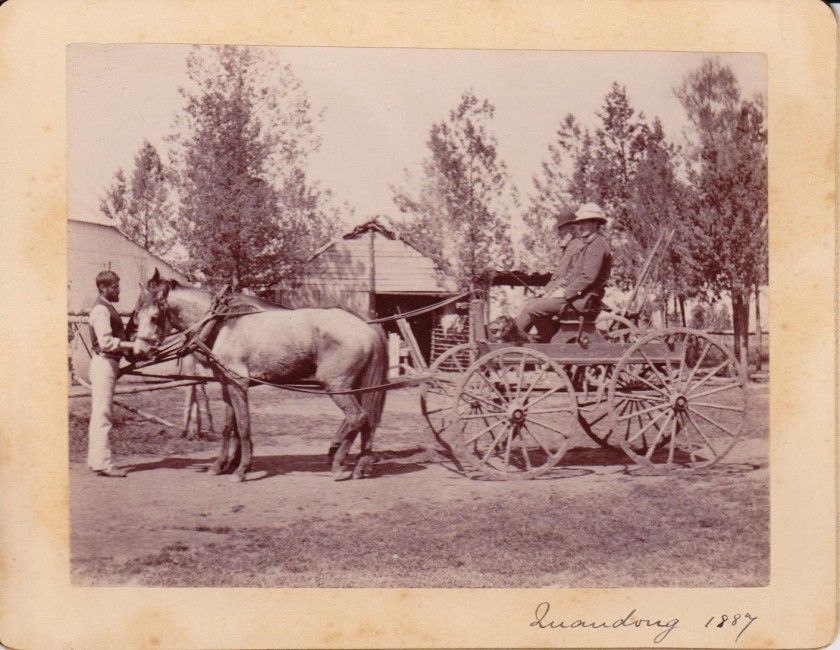

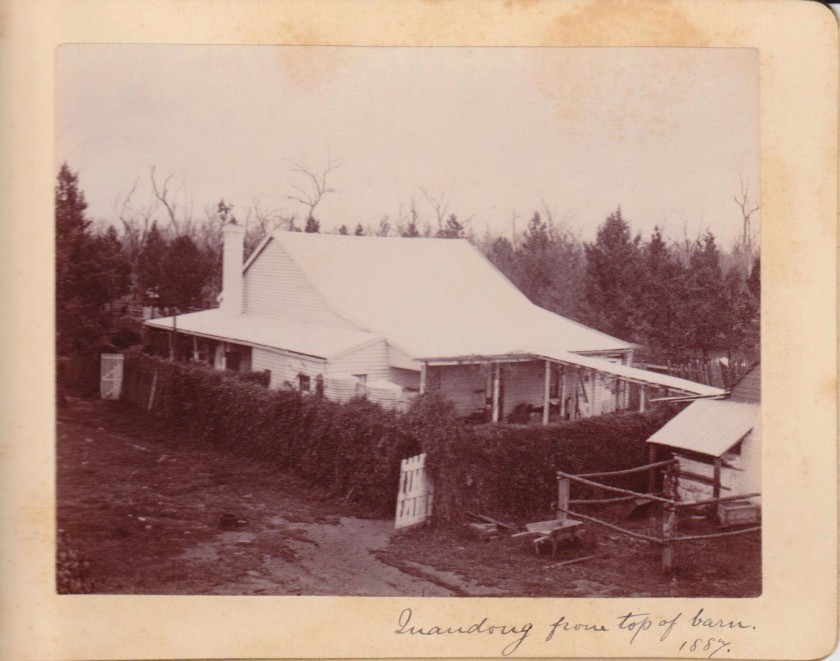

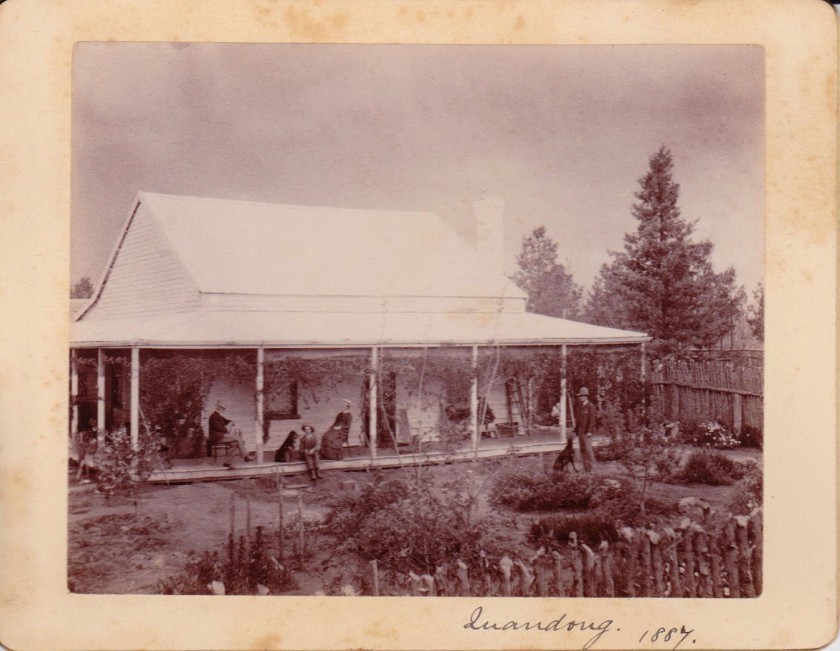
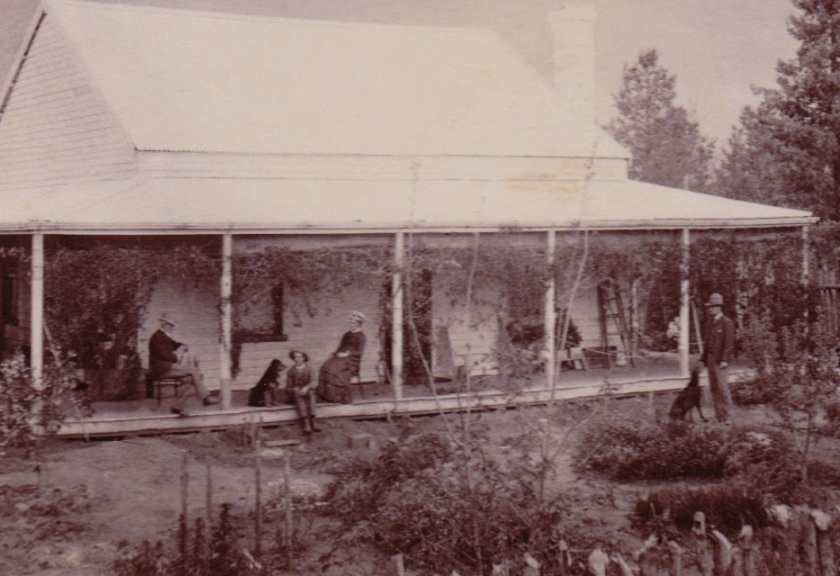
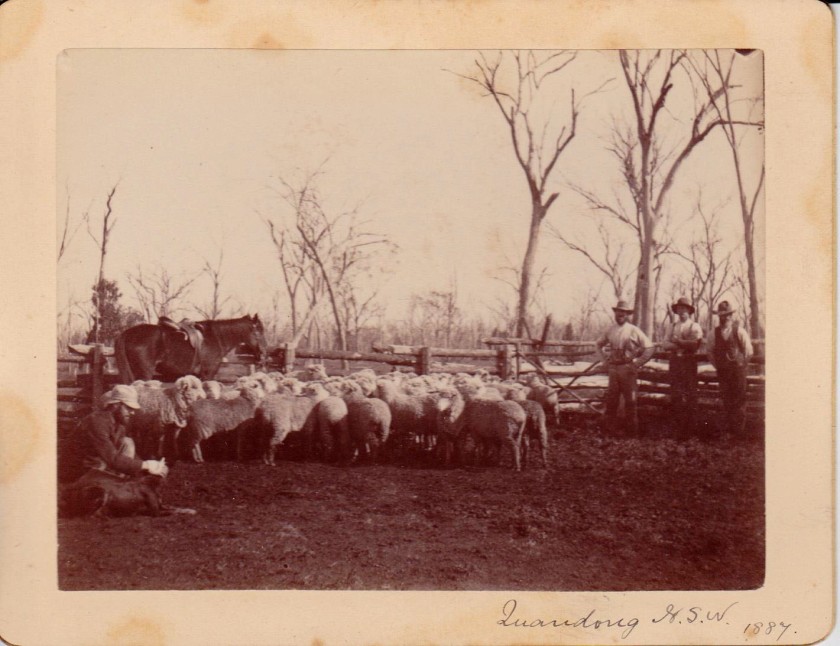


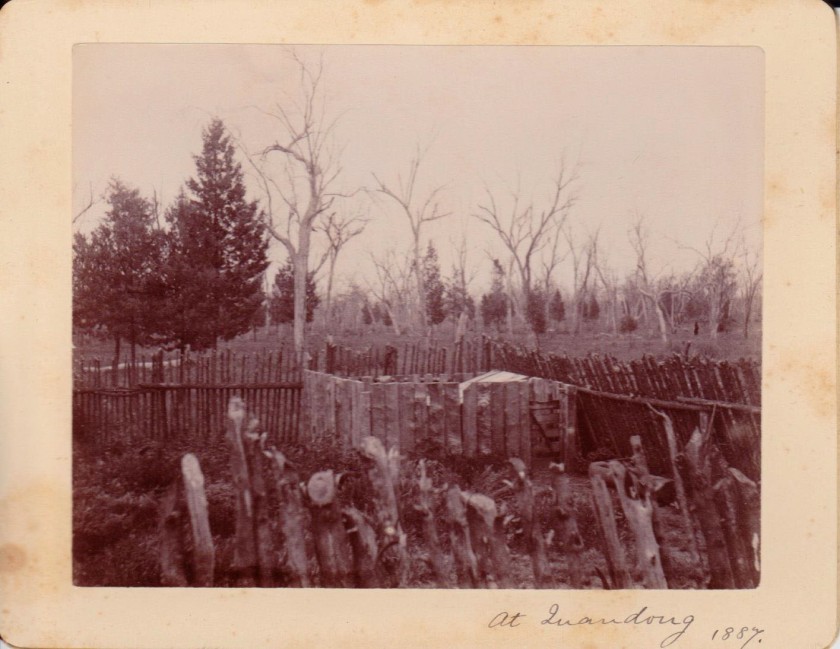
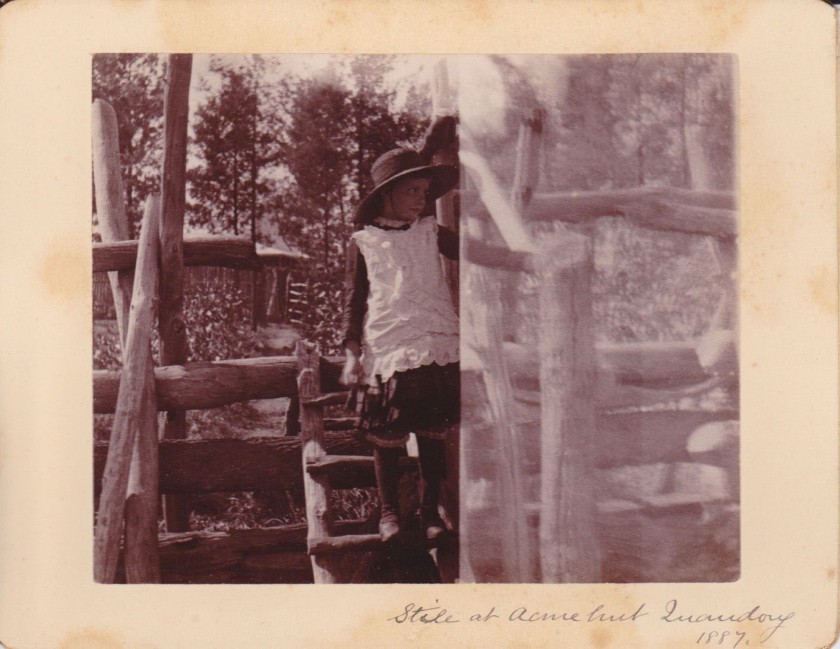
You must be logged in to post a comment.